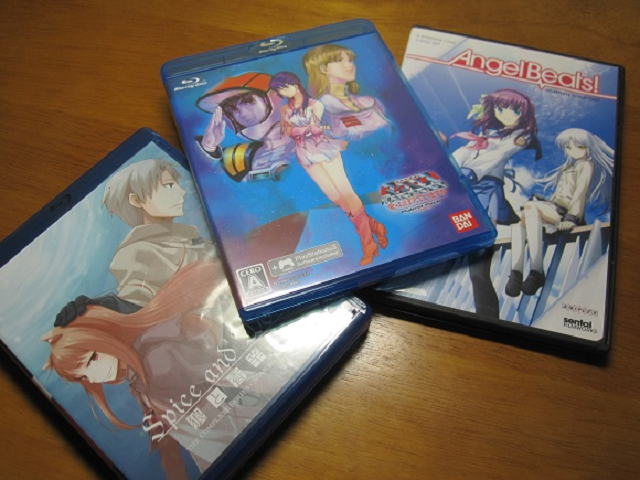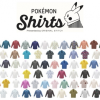
Living Appraisal service helps family decide what to do with all the Blu-rays, figures, and plushies that departed otaku can’t take with them.
Otaku are, by nature, collectors. All of those Blu-ray box sets, limited edition figures, and event-exclusive pieces of merchandise are specifically designed to be things they’ll open their wallets for because they want them on their shelves forever.
But sadly, while anime may be a lifelong passion for hardcore fans, life itself is fleeting. So what happens to your personal otaku treasure trove when you die?
That’s a question Mandarake, one of Japan’s largest specialty shops for second-hand anime items, wants to help answer with its Seizen Mitsumori, or Living Appraisal, service. For no charge Manadarake’s specialized staff will examine your otaku assets and give you an itemized list of their approximate values, in the sense of how much the chain would be willing to pay for them.
▼ “So this era has finally come” says Japanese Twitter user @walkyurie, who shared a photo of a poster advertising the Living Appraisal service.
ついに来たか… pic.twitter.com/uwHXRkWGGf
— 悪胡瓜 (@walkyurie) March 12, 2019
On its website, Madarake describes the service with:
“A service for people who are thinking seriously about what will happen to their collection…When the time to say goodbye comes, in accordance with your wishes, this service will help your belongings be passed on to a future generations of collectors, or to remain with your family as part of their inheritance.”
Clients who receive an appraisal are under no obligation to sell the items to Mandarake, either before or after their passing. Rather, the intent is to give the applicant and his or her surviving relatives an idea of which items are valuable, and to what extent, in order to make an informed decision whether to keep, sell, or otherwise dispose of them. After all, non-fans may not be able to tell a rare figure from a commonplace one, or realize the premium a soundtrack CD commands on the used marker by nature of still having its paper spine sleeve.
While Mandarake does not require a doctor’s documentation of terminal ailments, the chain does remind applicants that the Living Appraisal service (which was launched in 2016 and can be applied for here) is first and foremost for collectors who know their remaining time is particularly limited. Items including, but not limited to, anime home video, collected manga volumes, figures, models, illustrations, and comic manuscripts/production materials can all be evaluated, with individual sessions covering anywhere between one and 100 items.
Though anime’s TV roots go back to the 1960s, it really wasn’t until the 1980s that hardcore fandom, in any way that resembles today’s, started to form. That means we’re just now on the cusp of the emergence of a significant elderly otaku demographic, and just like how seniors with more mainstream hobbies want to have their affairs in order, it makes sense that anime fans do too, both to prevent placing a burden on their families and to keep their collections from getting tossed in the trash because no one knew what to do with it instead.
Sources: Mandarake via Hachima Kiko
Top image ©SoraNews24
● Want to hear about SoraNews24’s latest articles as soon as they’re published? Follow us on Facebook and Twitter!
Follow Casey on Twitter, where he should get his copy of Dracula X evaluated.

 Chinese woman removes her bra in public at a luxury appraisal event in Beijing
Chinese woman removes her bra in public at a luxury appraisal event in Beijing Real gems from Japanese arcade UFO catchers: Crane-caught riches, or a shiny scam?
Real gems from Japanese arcade UFO catchers: Crane-caught riches, or a shiny scam? Toy maker offers new toy storage and safekeeping service so you can buy more toys
Toy maker offers new toy storage and safekeeping service so you can buy more toys Retail store warns a shoplifter to return the goods… or have his identity exposed online
Retail store warns a shoplifter to return the goods… or have his identity exposed online Free anti-embarrassment bags to be handed out at Comiket
Free anti-embarrassment bags to be handed out at Comiket McDonald’s new Happy Meals offer up cute and practical Sanrio lifestyle goods
McDonald’s new Happy Meals offer up cute and practical Sanrio lifestyle goods All-you-can-drink Starbucks and amazing views part of Tokyo’s new 170 meter-high sky lounge
All-you-can-drink Starbucks and amazing views part of Tokyo’s new 170 meter-high sky lounge Studio Ghibli releases new action figures featuring Nausicaä of the Valley of the Wind characters
Studio Ghibli releases new action figures featuring Nausicaä of the Valley of the Wind characters McDonald’s Japan releases a pancake pie for new retro kissaten coffeeshop series
McDonald’s Japan releases a pancake pie for new retro kissaten coffeeshop series Super Nintendo World expansion gets delayed for several months at Universal Studios Japan
Super Nintendo World expansion gets delayed for several months at Universal Studios Japan Studio Ghibli glasses cases let anime characters keep an eye on your spectacles
Studio Ghibli glasses cases let anime characters keep an eye on your spectacles More foreign tourists than ever before in history visited Japan last month
More foreign tourists than ever before in history visited Japan last month The oldest tunnel in Japan is believed to be haunted, and strange things happen when we go there
The oldest tunnel in Japan is believed to be haunted, and strange things happen when we go there Randomly running into a great sushi lunch like this is one of the best things about eating in Tokyo
Randomly running into a great sushi lunch like this is one of the best things about eating in Tokyo Pokémon dress shirts progress into Gen 2 with 100 brand-new Johto region designs【Photos】
Pokémon dress shirts progress into Gen 2 with 100 brand-new Johto region designs【Photos】 Disney princesses get official manga makeovers for Manga Princess Cafe opening in Tokyo
Disney princesses get official manga makeovers for Manga Princess Cafe opening in Tokyo Starbucks reopens at Shibuya Scramble Crossing with new look and design concept
Starbucks reopens at Shibuya Scramble Crossing with new look and design concept Beautiful new Final Fantasy T-shirt collection on the way from Uniqlo【Photos】
Beautiful new Final Fantasy T-shirt collection on the way from Uniqlo【Photos】 Is the new Shinkansen Train Desk ticket worth it?
Is the new Shinkansen Train Desk ticket worth it? Foreign English teachers in Japan pick their favorite Japanese-language phrases【Survey】
Foreign English teachers in Japan pick their favorite Japanese-language phrases【Survey】 Beautiful Sailor Moon manhole cover coasters being given out for free by Tokyo tourist center
Beautiful Sailor Moon manhole cover coasters being given out for free by Tokyo tourist center Studio Ghibli releases Kiki’s Delivery Service chocolate cake pouches in Japan
Studio Ghibli releases Kiki’s Delivery Service chocolate cake pouches in Japan Japan’s bone-breaking and record-breaking roller coaster is permanently shutting down
Japan’s bone-breaking and record-breaking roller coaster is permanently shutting down New definition of “Japanese whiskey” goes into effect to prevent fakes from fooling overseas buyers
New definition of “Japanese whiskey” goes into effect to prevent fakes from fooling overseas buyers Our Japanese reporter visits Costco in the U.S., finds super American and very Japanese things
Our Japanese reporter visits Costco in the U.S., finds super American and very Japanese things Studio Ghibli unveils Mother’s Day gift set that captures the love in My Neighbour Totoro
Studio Ghibli unveils Mother’s Day gift set that captures the love in My Neighbour Totoro Domino’s Japan now sells…pizza ears?
Domino’s Japan now sells…pizza ears? New Japanese KitKat flavour stars Sanrio characters, including Hello Kitty
New Japanese KitKat flavour stars Sanrio characters, including Hello Kitty One of Tokyo’s most famous meeting-spot landmarks is closing for good
One of Tokyo’s most famous meeting-spot landmarks is closing for good Kyoto creates new for-tourist buses to address overtourism with higher prices, faster rides
Kyoto creates new for-tourist buses to address overtourism with higher prices, faster rides Sales of Japan’s most convenient train ticket/shopping payment cards suspended indefinitely
Sales of Japan’s most convenient train ticket/shopping payment cards suspended indefinitely Sold-out Studio Ghibli desktop humidifiers are back so Totoro can help you through the dry season
Sold-out Studio Ghibli desktop humidifiers are back so Totoro can help you through the dry season Japanese government to make first change to romanization spelling rules since the 1950s
Japanese government to make first change to romanization spelling rules since the 1950s Ghibli founders Toshio Suzuki and Hayao Miyazaki contribute to Japanese whisky Totoro label design
Ghibli founders Toshio Suzuki and Hayao Miyazaki contribute to Japanese whisky Totoro label design Doraemon found buried at sea as scene from 1993 anime becomes real life【Photos】
Doraemon found buried at sea as scene from 1993 anime becomes real life【Photos】 Tokyo’s most famous Starbucks is closed
Tokyo’s most famous Starbucks is closed One Piece characters’ nationalities revealed, but fans have mixed opinions
One Piece characters’ nationalities revealed, but fans have mixed opinions We asked a Uniqlo employee what four things we should buy and their suggestions didn’t disappoint
We asked a Uniqlo employee what four things we should buy and their suggestions didn’t disappoint Princesses, fruits, and blacksmiths: Study reveals the 30 most unusual family names in Japan
Princesses, fruits, and blacksmiths: Study reveals the 30 most unusual family names in Japan Anime matchmaking comes to America with Otaku Speed Dating
Anime matchmaking comes to America with Otaku Speed Dating Here’s why the home of an otaku is a great place to be during a blackout
Here’s why the home of an otaku is a great place to be during a blackout Anime figures damaged in earthquake? Tokyo manufacturer offers to repair them for free
Anime figures damaged in earthquake? Tokyo manufacturer offers to repair them for free Are anime and idol songs the musical choice of poor people? Income survey has some otaku worried
Are anime and idol songs the musical choice of poor people? Income survey has some otaku worried Japanese restaurant’s recruiting ad promises time off for anime conventions
Japanese restaurant’s recruiting ad promises time off for anime conventions Otaku dating service advises singles to have interests other than anime
Otaku dating service advises singles to have interests other than anime New world record – Tokyo capsule toy shop will have more machines in one spot than anywhere else
New world record – Tokyo capsule toy shop will have more machines in one spot than anywhere else More than half of young anime workers live with their parents or receive money from them【Survey】
More than half of young anime workers live with their parents or receive money from them【Survey】 Japanese otaku’s amazing house of anime and video game merch goes viral【Video】
Japanese otaku’s amazing house of anime and video game merch goes viral【Video】 The pitfalls of inter-otaku conversation, turns out it’s no better than with non-otaku
The pitfalls of inter-otaku conversation, turns out it’s no better than with non-otaku Otaku Lovers: Japan’s new singles event that’s just for hardcore anime and video game fans
Otaku Lovers: Japan’s new singles event that’s just for hardcore anime and video game fans Chinese internet unusually upset by “most usual Chinese face” composite
Chinese internet unusually upset by “most usual Chinese face” composite Photos showing evidence of the coming violent kitty revolution surface on Japanese Twitter
Photos showing evidence of the coming violent kitty revolution surface on Japanese Twitter
Leave a Reply